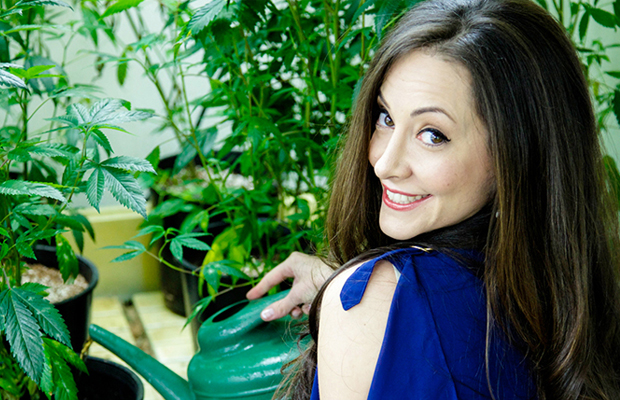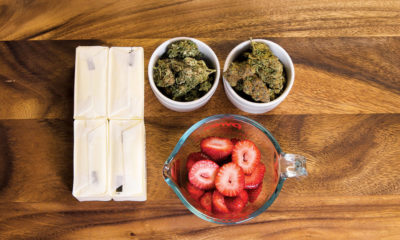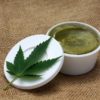Medical
Dr. Dina “Marijuana Consultant To The Stars” Talks Medical Marijuana
I reached out to the one and only Dr. Dina (aka the “Real Nancy Botwin”) to get her perspective on the current state of medical marijuana. In the past year, this cannalebrity has moved her way up the powerful ranks of the Los Angeles cannabis scene after being surprisingly shot into the public eye by the one and only Snoop Lion (Snoop Dogg) in a GQ Article titled “The Lion Smokes Tonight“.
I caught her right in the middle of filming with VICE for an upcoming documentary she is involved in. Dina kindly took the time to give me a personalized perspective.
Dr. Dina is a pretty, petite, well dressed brunette who is willing to make waves in the cannabis scene by stepping out of Calabasas (the real “Agrestic”) and into the legitimate medical cannabis industry, proving patients are not criminals. That is where the similarities between Dr. Dina and Weeds’ lead character Nancy Botwin end.
Dr. Dina helped the cannabis industry in Los Angeles evolve and thrive. In 2002, she started by hosting patient clinics with cannabis friendly licensed physicians. She helped hundreds of thousands of patients to get their medical cannabis recommendations over the years to come. Those patients needed a safe place to access their medicine, so Dr. Dina helped open a dispensary—in fact, she was the first woman in L.A. to do so.
Dr. Dina is the first contact for marijuana entrepreneurs in Los Angeles. She gives consultations on businesses ranging from trendy nightclubs to medical cannabis dispensaries. Being based in Los Angeles, she quickly became the marijuana consultant to the stars. Her ventures have been aided by Snoop Lion, telling people to “call Dr. Dina” whenever he is asked how he smokes without going to jail.
Her first club was strategically placed in the cultural epicenter of L.A.’s Rock and Roll history, found between the Whiskey and The Roxy, right around the Rainbow.
“Everything cool in L.A. is on Sunset Blvd. We were there, so we were cool and we capitalized on that,” says Dr. Dina. “We quickly became the go-to destination for everyone from patients who were terribly ill, the homeless, the rich and famous—they all met with me for their card back in the day.”
“My job gets grittier than many think. I have a core group of patients that have relied on me for over a decade,” Dr. Dina continues. “I watch some of them get well, but some come too late, so we work on enhancing their quality of life, and delivering compassionate end of life care. These are the toughest cases, because my heart is in it. It makes me think about all those who don’t have access to this incredible plant. Why can’t the government understand how this miracle plant helps so many? It infuriates me, but at least there are options for patients in several states now.”
Dr. Dina says the available knowledge continues to evolve, and that ten years ago when she began working in the industry the amount of information she is able to provide about medical cannabis has doubled.
“What I know now saves lives and changes minds. So I put myself out there to be someone that others can come to when they need it, because people don’t know, and they need to be educated.”
Dina stresses that it is important to work with patients one on one, because there is no database to make patient comparisons with. Every single patient is different, just as every single strain is different. At this time, there is no way of quantifying the positive results between strains.
“If we could have a large team of growers, each growing just one strain. We could start learning about each different strain and figure out the specifics. We could learn valuable things by extracting all the chemicals from the plant and developing compositions for specific conditions and patients,” says Dr. Dina. “For example, I like the way OG Kush helps my bad back, but it’s impossible to find the same exact strain of OG Kush in every dispensary.”
She says she sees a lot of people waiting on certain strains, specifically Charlotte’s Web, but patients can’t access it anywhere but Colorado and up until recently, L.A. She says the demand for the strain was fueled by the CNN “Weed” special.
“I recently spoke to parents with a child with epilepsy, while I was on the phone, the daughter went into a seizure that ultimately led to an ER visit,” says Dr. Dina. “The mother didn’t want to try anything other than this one oil that she saw on the recent CNN documentary, the one everyone says is the only thing that works. It hurts me to see great collectives with great THC or CBD strains on the shelves, and everyone is convinced that there is this one and only strain that will work.”
Dr. Dina believes that breeders and growers hoarding certain genetics is wrong, and that people need to pay special attention to educating the patients—instead of selling them bud with little or no care, no help and no advice.
“When OG Kush was popular, and being sold for a thousand dollars a cut, I tried to fight the greed, I think that is an ugly game,” says Dr. Dina. “So, I sent cuts up north to be grown and given out, and pretty soon everyone had OG and it was awesome, so many people had what they needed without the oppressive cost of the genetics.”
“We need to take the stance of all for patients, all for one another and all against the way the feds treat us like criminals. They [the DEA] have a job to do, yes; but, there are other much more dangerous drugs, they need to switch their focus to those, instead of targeting cannabis,” concludes Dr. Dina.
Do you agree with Dr. Dina? Should medical cannabis genetics be shared for the good of patients? Tell us in the comments below!























